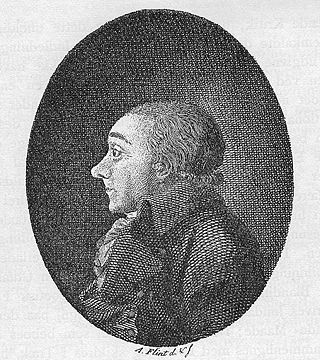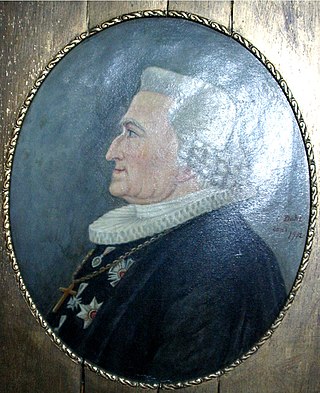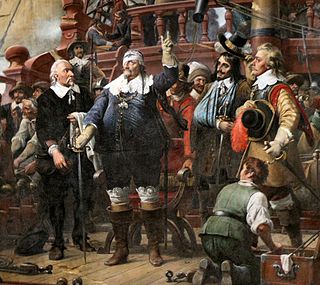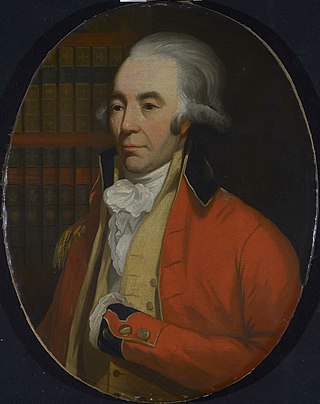
Johan Herman Wessel was an 18th-century Danish-Norwegian poet, satirist and playwright. His written work was characterized by the use of parody and satiric wit.

Johan Frederik Clemens was a Pomeranian-Danish printmaker in etching.

Assistens Cemetery in Copenhagen, Denmark, is the burial site of many Danish notables as well as an important greenspace in the Nørrebro district. Inaugurated in 1760, it was originally a burial site for the poor laid out to relieve the crowded graveyards inside the walled city, but during the Golden Age in the first half of the 19th century it became fashionable and many leading figures of the epoch, such as Hans Christian Andersen, Søren Kierkegaard, Christoffer Wilhelm Eckersberg, and Christen Købke are all buried here.

Edvard Storm was a Norwegian poet, songwriter and educator. His writings were frequently characterized by the Norwegian romantic nationalism common to the age.

Johan Nordahl Brun was a Norwegian-Danish poet, dramatist, bishop of Bergen (1804–1816), and politician who contributed significantly to the growth of national romanticism in Norway, contributing to the growing national consciousness.

"Kong Christian stod ved højen mast", or simply "Kong Christian", is the unofficial royal anthem of Denmark that officially has equal status of national anthem together with "Der er et yndigt land". However, it is almost exclusively used regarding the Danish royal house and the military. The theme of the song is the heroics of Danish and Norwegian sailors during the wars against Sweden in the 17th and 18th centuries.

Johan Randulf Bull was a Norwegian judge.
The Royal Norwegian Society of Sciences and Letters is a Norwegian learned society based in Trondheim. It was founded in 1760 and is Norway's oldest scientific and scholarly institution. The society's Protector is King Harald V of Norway. Its membership consists of no more than 435 members elected for life among the country's most prominent scholars and scientists.
Events in the year 1809 in Norway.
Events in the year 1772 in Norway.
Events in the year 1760 in Norway.
Events in the year 1802 in Norway.
Events in the year 1790 in Norway.
Events in the year 1758 in Norway.
Ove Gjerløw Meyer was a Norwegian jurist and government official, best known for founding the Norwegian Society.

Ole Christopher Wessel was a Norwegian jurist, civil servant and landowner. He lived in Denmark-Norway.

Magdalene Sophie Buchholm was an 18th-century Norwegian poet. She was the only acknowledged female Norwegian writer of her time, and the only female in the academic society Det Norske Selskab.

Guldberg's hymnal is a hymnal that was created by Bishop Ludvig Harboe and Ove Høegh-Guldberg and was authorized for use in 1778.

Jens Krag-Juel-Vind, Baron of Juellinge, was a Danish nobleman, Supreme Court justice and landowner.

Kierlighed uden Strømper: Et Sørge-Spil i Fem Optog is a comedy by the Norwegian playwright Johan Herman Wessel, published in 1772.












